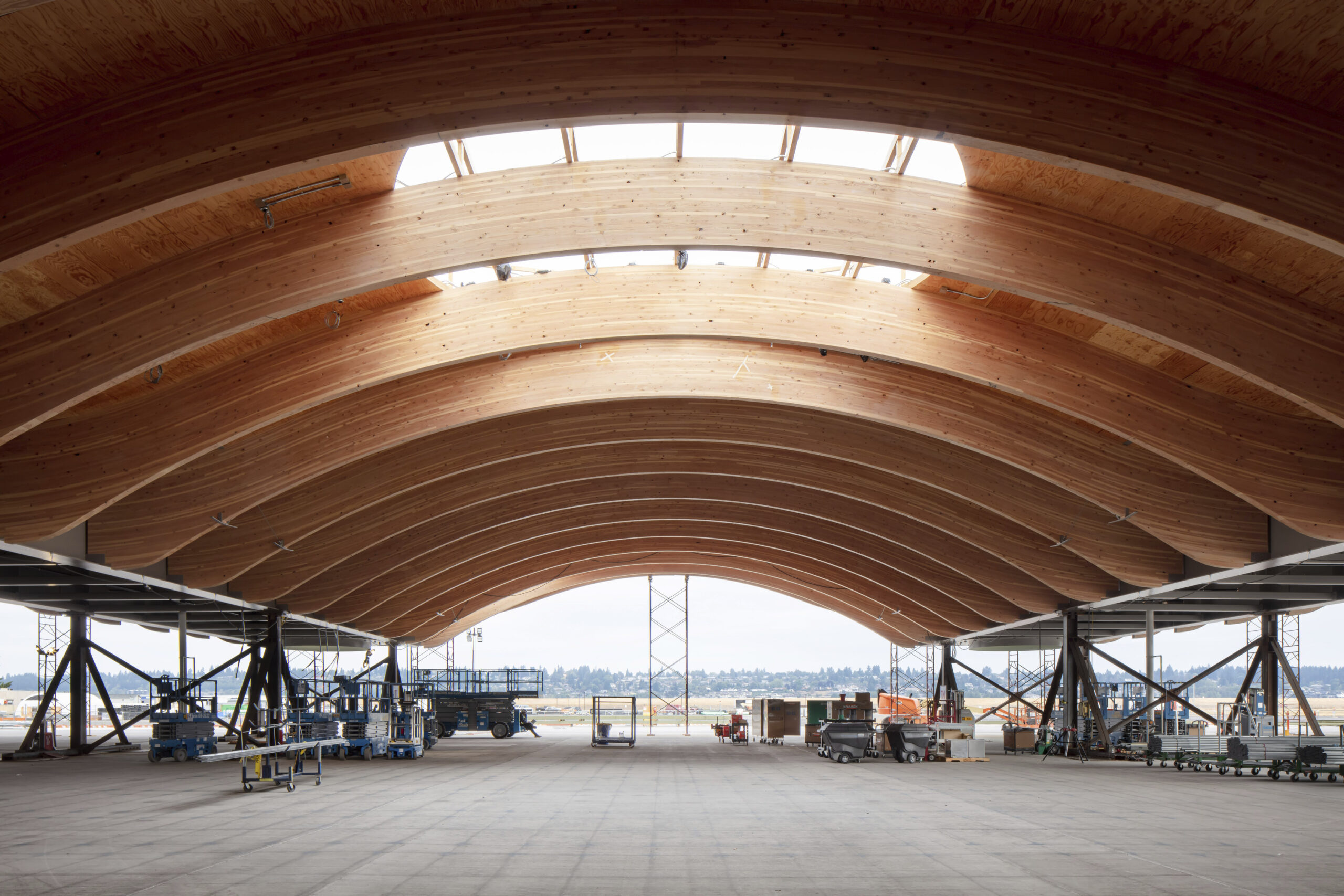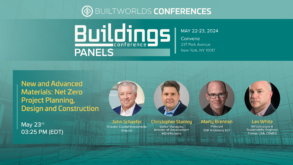
Building Conference Preview
Marty Brennan, principal at ZGF Architects, has long focused on designing projects that support healthy, sustainable buildings and communities. As a sustainability leader, he’s implemented innovative building systems, launched open-source tools and co-authored applied research papers.
Brennan will be joining a panel of other sustainability-minded experts at BuiltWorlds’ upcoming Buildings Conference in New York, May 22-23, to discuss the planning, design and construction of leading-edge net-zero carbon projects, as well as alternative material choices aimed at reducing embodied carbon.
In advance of the event, BuiltWorlds caught up with the Seattle-based architect and self-described “mass timber enthusiast.”
Questions and answers below edited for clarity and brevity.
How do sustainability and/or net-zero initiatives impact your organization?
ZGF embraced sustainable design as a core value long before “green” or LEED became common phrases. We believe sustainability is an intrinsic component of good design and we’ve backed up those beliefs with several public declarations. ZGF is committed to the AIA 2030 Challenge, the US Architects Declare and AIA Healthy Materials Pledge. In 2021, we signed the 1.5°C COP26 Communiqué to further call on the industry and our colleagues to join us in reducing our carbon footprint, and in 2022, we updated our JUST 2.0 label to evaluate our social justice and equity practices. In 2023, we signed the Health Sector Climate Pledge to walk the talk with our healthcare clients.

All the wood for the nine-acre ceiling at the newly remodeled Portland International Airport, designed by ZGF, came from sustainably-managed forests within 300 miles of the airport. Photo credit: Stephen A. Miller.
Internal to our business operations, ZGF committed to being greenhouse gas neutral (with offsets as necessary) for scope 1 and 2 (and targeted scope 3 by 2023, and by 2030 for scope 1, 2, and (“all of”) 3, through the AIA Large Firm Roundtable.
This level of commitment can be a lot for architects who are responsible for life safety, evolving building codes and technologies, and coordination across all disciplines and project stakeholders.
How does this impact your day-to-day role?
Sustainability is in ZGF’s DNA and impacts my day-to-day with many roles that range from project manager leading net zero projects, technical architect providing QM to other projects, researcher co-developing carbon accounting tools, data analyst leading firmwide AIA 2030 reporting, lecturer presenting sustainability in practice to students, and mentor supporting a ZGFer’s career path.
Where do you see the most opportunity relative to sustainability in the built environment?
The most immediate opportunity for decarbonization and improved public health is understanding and addressing upstream impacts in construction material supply chains, from forests to concrete suppliers to steel mills. This starts with conversations with suppliers around carbon accounting, labor practices and decarbonization plans. Can a material come from domestic or regional sources? Can the material be produced with renewable energy, sequester carbon, or be reused?
A new ZGF-designed headquarters complex for Amazon, nearing completion in Virginia, is the largest project ever certified Platinum under LEED v4 for Building Design and Construction. Image courtesy of ZGF
Architects wield economic power by what they specify. We want competitive, diverse options in the market but will filter the selection to those that disclose and endeavor towards low-carbon, healthy materials. That said, we have found broad success with low-carbon concrete procurement from Seattle to Indiana to Virgina without an increase in cost or impact to performance.
What is a challenge that you feel is facing the built environment today when it comes to net-zero building?
The number one issue is not setting project sustainability goals day one with the client, design and construction team.
There can be a perception that sustainability adds cost and risk to a project but we find an integrated approach can actually reduce life cycle costs, and bring additional value through improved occupant experience and health.
Going 100% electric is an example that has had some resistance in healthcare, but when you factor in reduced utility and maintenance costs, increased resilience in weather events, and potential funding sources through the Inflation Reduction Act, you can flip the ROI discussion.
Another challenge is the unpredictability of electric utility infrastructure and policy supporting large-scale renewable projects, local microgrids and net metering on project sites across the United States. This will increasingly become a bottleneck issue with trends towards electrifying manufacturing, transportation, and building operations.
Join us at BuiltWorlds Buildings Conference for more from Brennan and fellow panelists.


Discussion
Be the first to leave a comment.
You must be a member of the BuiltWorlds community to join the discussion.